Hammerhead Karoo 2 vs Garmin Edge 1040 Solar - which cycling computer is best for you?
A battle of the best cycling computers to help you decide what’s right for you and your riding
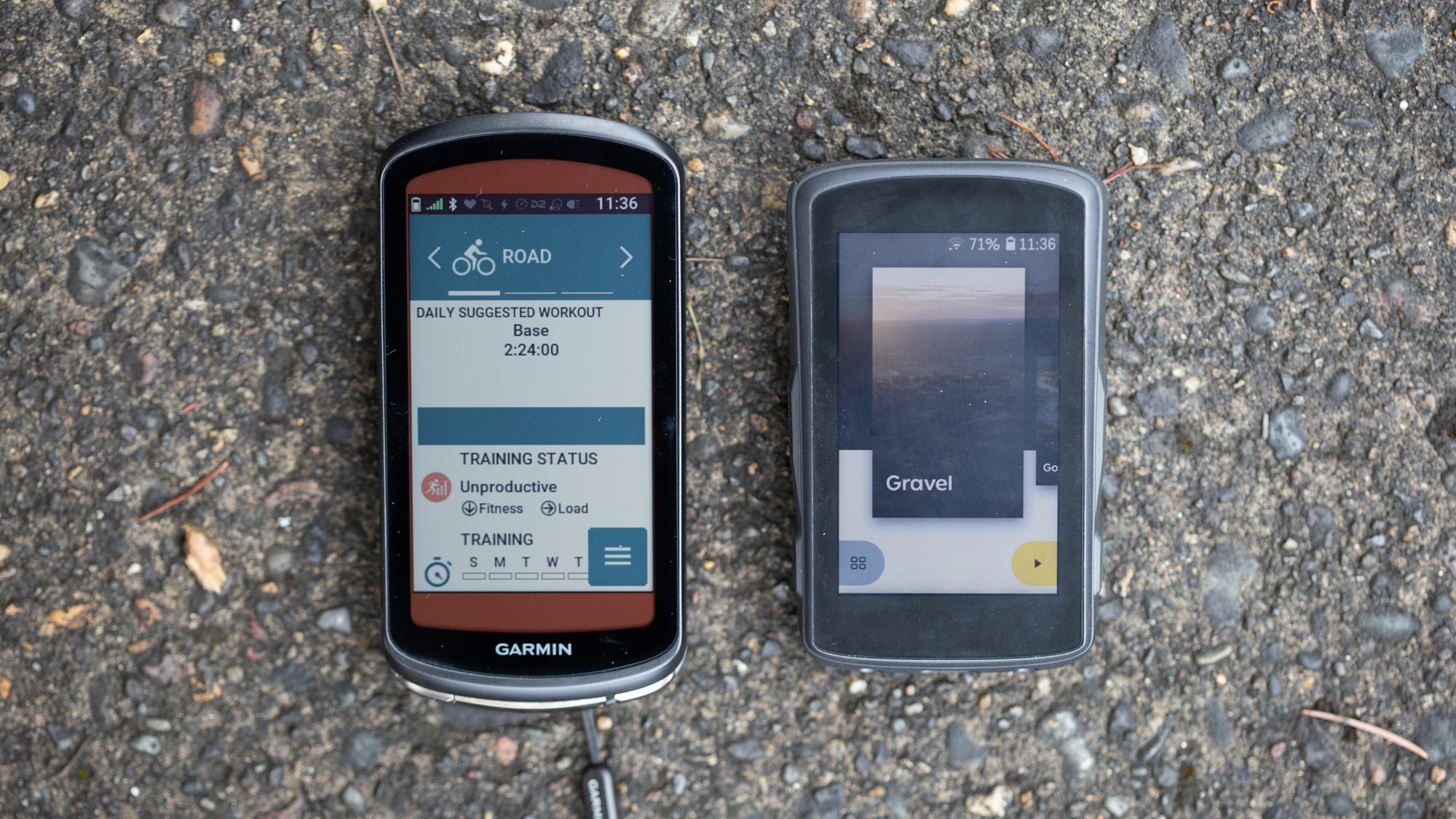
If you are looking for a bike computer you might have had a glance at our list of the best cycling computers. There are options that range in price and features but generally it breaks down into a few major categories. There are entry-level options and from there you can step up into the meat of the list. There’s also another level above that where you can really only find the Garmin 1000-series bike computers. We wanted to see how the two segments compare.
One of the options that sits in the biggest part of the bell curve, covering what most cyclists need, is the Hammerhead Karoo 2. The brand enjoys a somewhat cult-like following of users who absolutely love what many see as a different take on what cycling computers have always been. Recently the brand has also found itself as part of the larger SRAM ecosystem and expectations for what comes next are very high.
Meanwhile, there's little argument that Garmin started the segment we now recognise as a must-have for modern cyclists. The Edge series came on the market with the 205 and 305 in late 2005, and you can actually still see the echo of those units seventeen years later in the brand-new class-leading Garmin Edge 1040 Solar. Like others in the Edge 1000-series there’s basically no competition at this level. The price and features sit above anything else on the market. For those considering a cycling computer the question is what do you need? The Garmin Edge 1040 Solar might not have direct competition but you’ll still need to decide if what it offers makes sense to you.
With these questions in mind, we decided to put the Hammerhead Karoo 2 to the test against the Garmin Edge 1040 Solar. If you are looking for a cycling computer in 2022 these are two prime candidates. They represent a totally different take on how a cycling computer should work and their feature-sets will offer solutions for different needs. Keep reading to see what might make the best sense for you.
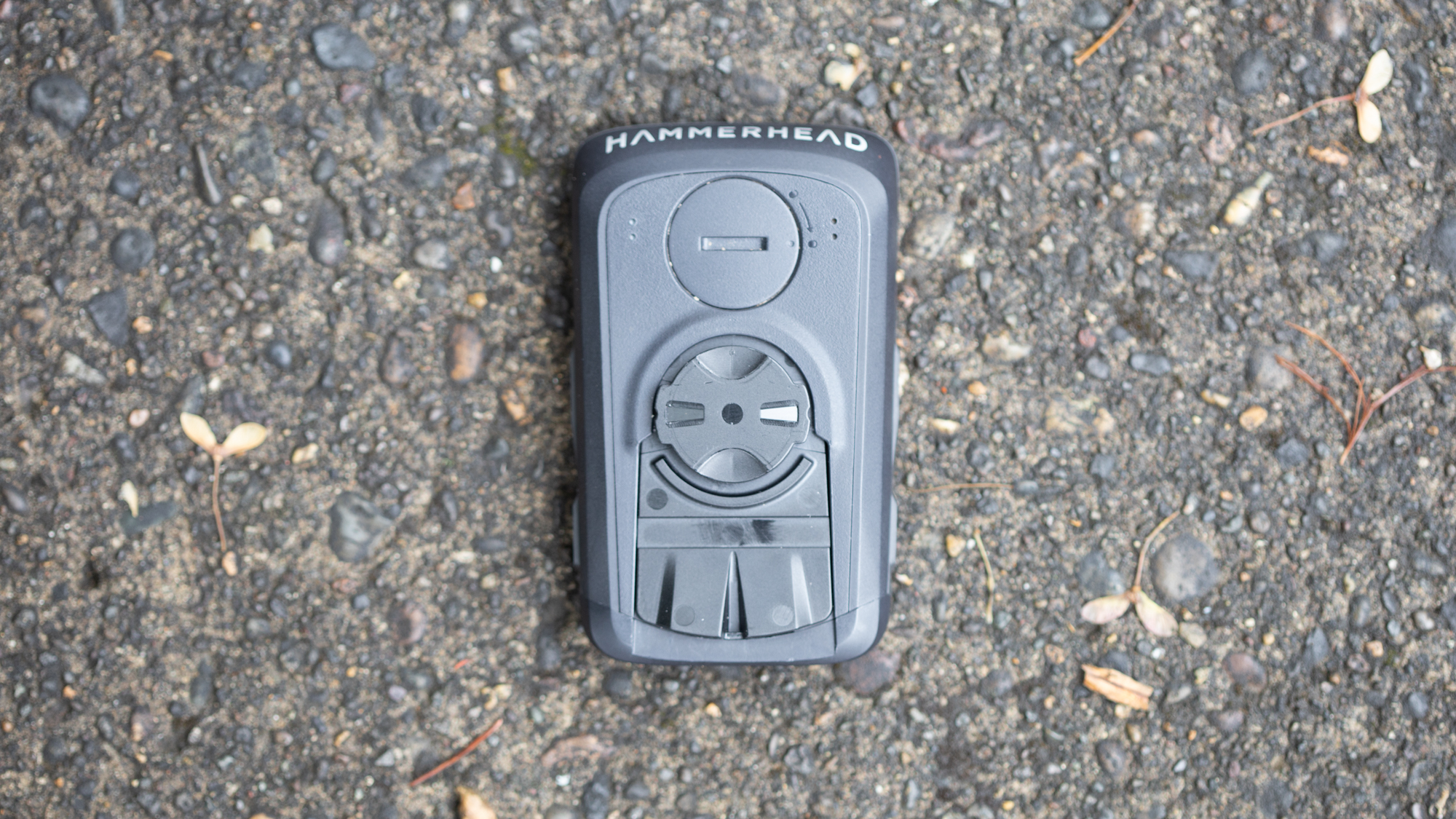
I mentioned in the intro that Hammerhead has a reputation for doing things differently. We are still at a time when older cyclists remember the Garmin Edge 500 and not many remember it fondly. For some people, that computer which is now more than ten years old, is an experience that still colours their perception of available options. Then, from the other side of the experience, younger cyclists question why the smartphone in their pocket is the most powerful computer in the history of the world while cycling computers seem somewhat stuck in time. Hammerhead answers both questions by building from an Android backend.
When the Hammerhead Karoo 2 first hit the market that Android backend was a lot more obvious. Another thing that sets Hammerhead apart from other cycling computers is the relentless update schedule. Typically, there's an update every two weeks and it's a mix of bug fixes as well as feature additions. It's a little like watching a kid grow up. Day to day it's hard to see the changes but if you turned it on when it came out back in late 2020 then again in 2022, it's almost unrecognisable as the same computer. One of the things that's changed over that time is how much of the Android experience creeps through.
Android is still there in the background though and it's one of the things that makes Hammerhead great. Bring up the keyboard and it's instantly recognisable for Android users. However, what's more central to the user experience is the screen. The panel is an anti-glare coated matte colour screen with a resolution of 480 x 800 (292 PPI) and support for multi-touch control. If it's raining, you can use physical buttons but you can also swipe down for settings, just like Android, and swipe left or right to change screens. Changing screens is fast and on the map screen you can pinch to zoom, rotate with two fingers, and double tap to zoom. The whole experience feels like a smartphone.
Get The Leadout Newsletter
The latest race content, interviews, features, reviews and expert buying guides, direct to your inbox!
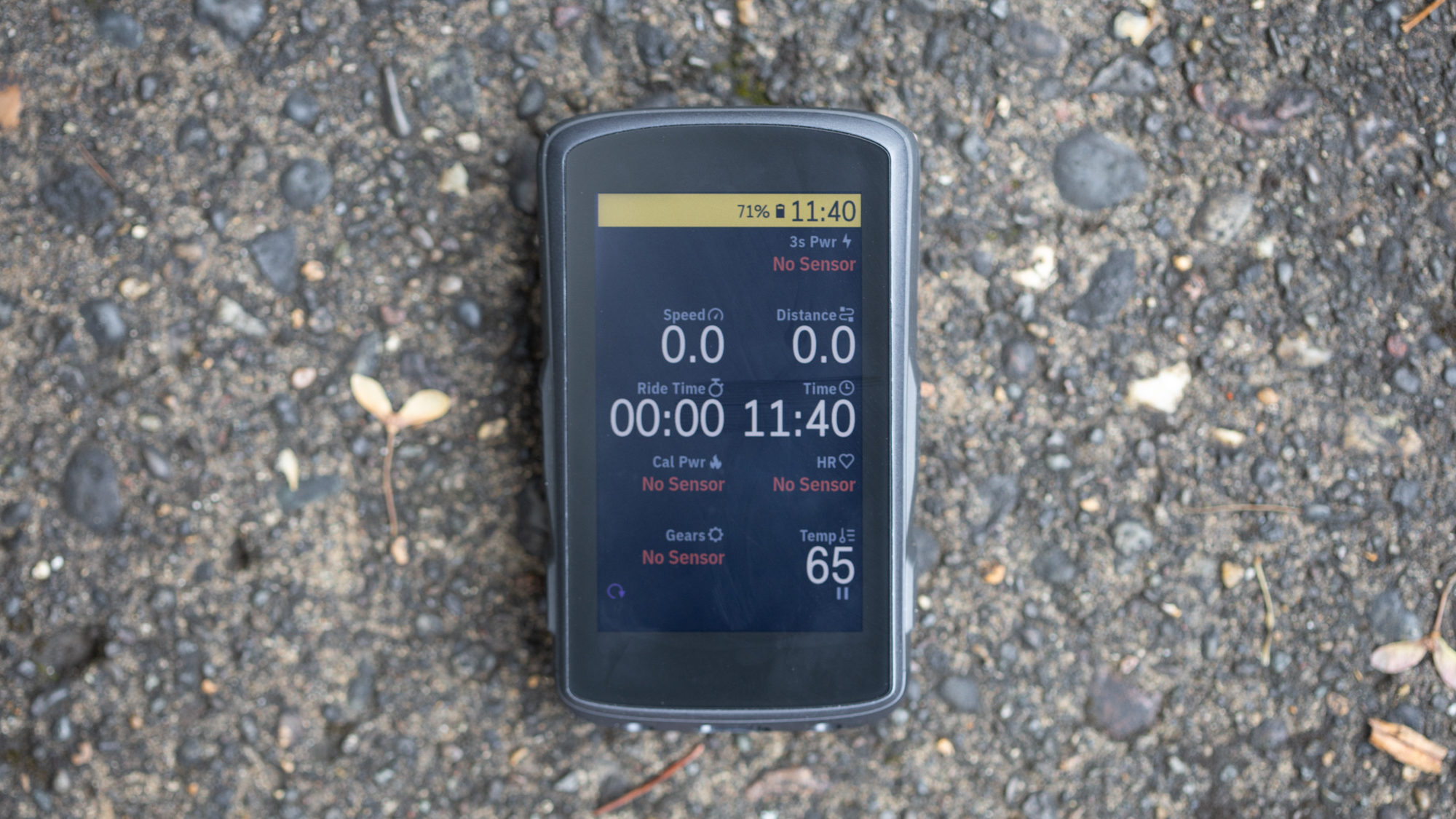
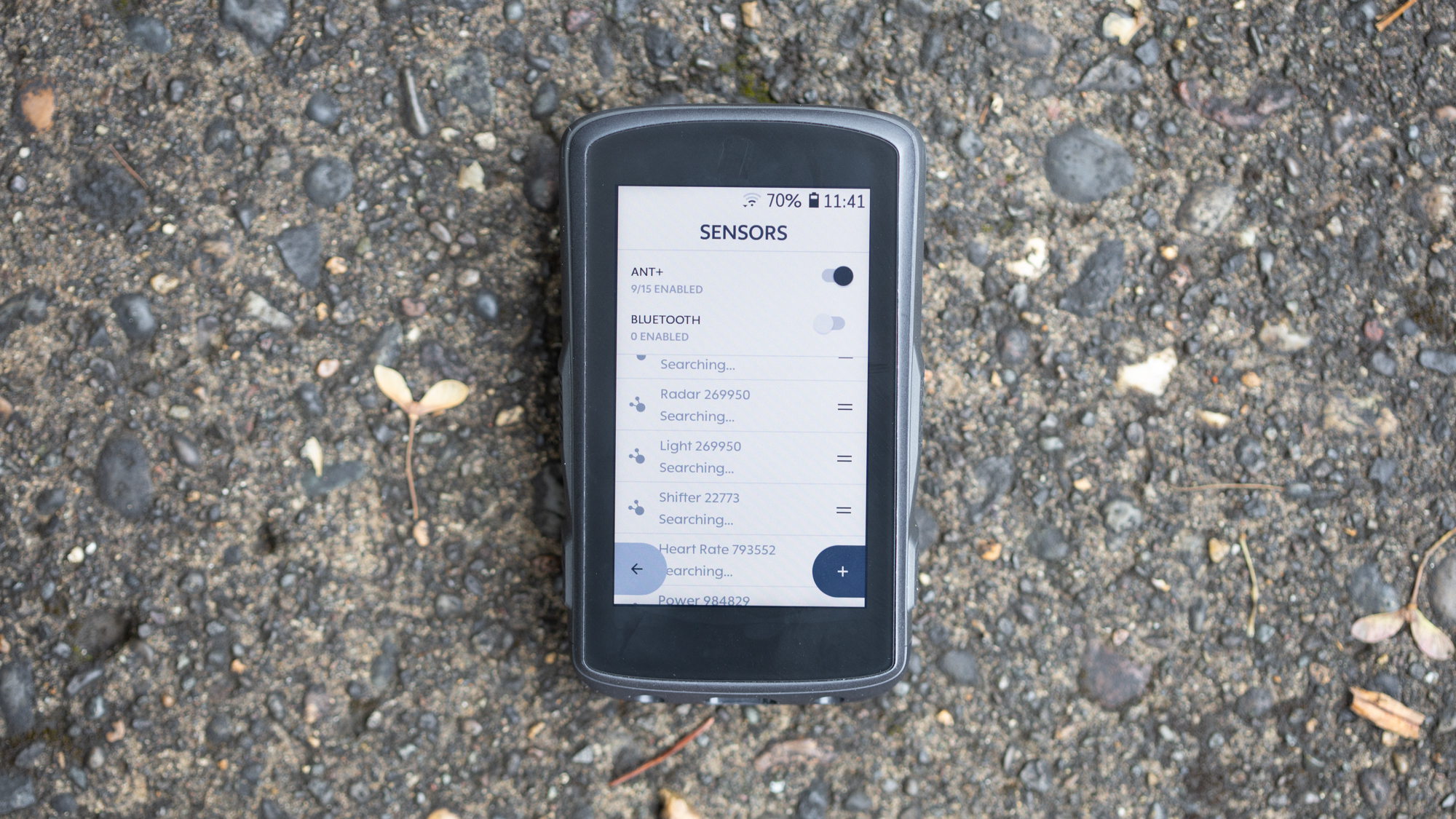
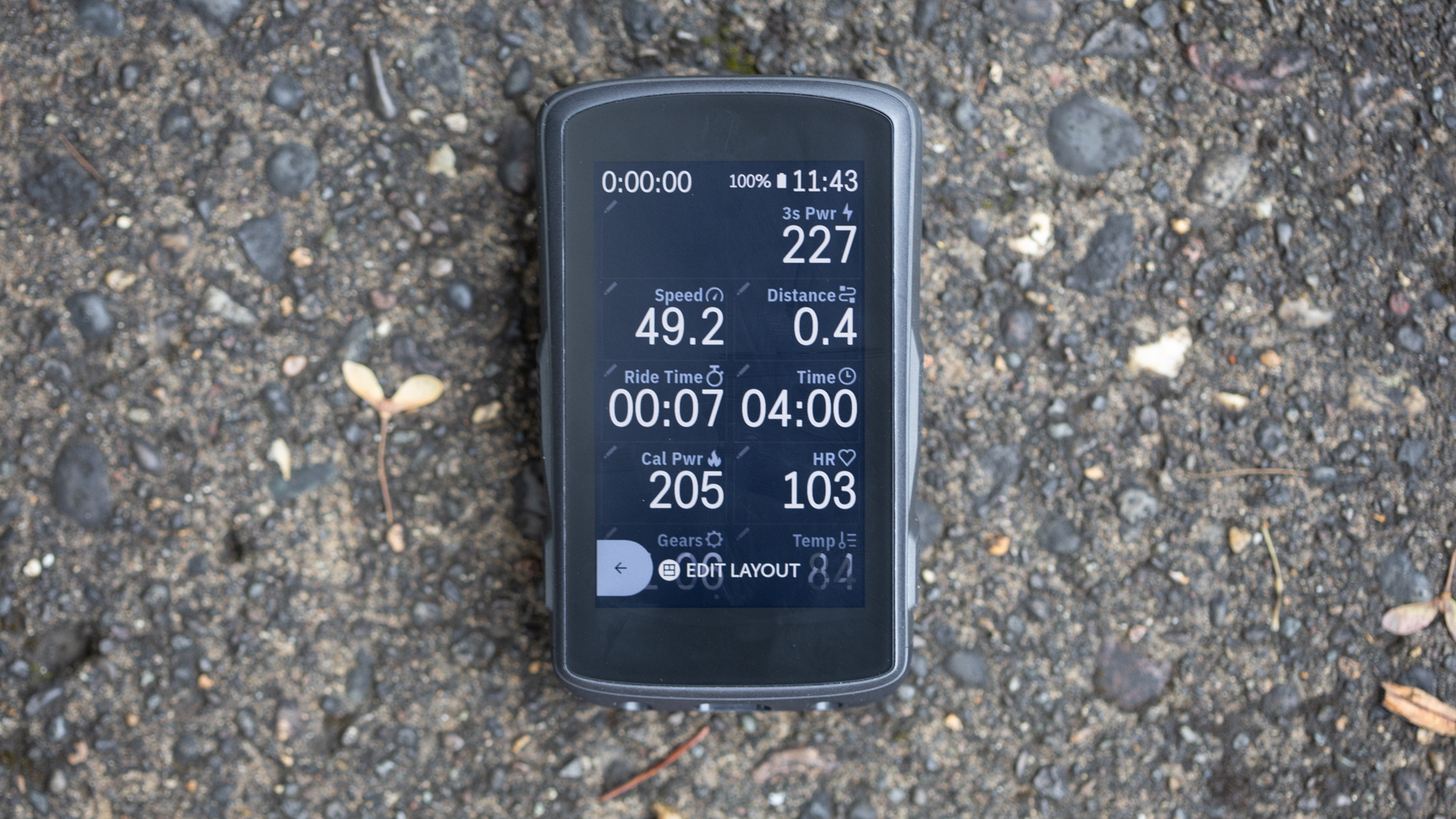
In terms of general riding, the basic experience revolves around profiles. You start by defining a profile and from there you can decide how many screens it includes and what those screens show. Sensors cover everything you can think of with a Bluetooth or ANT+ radio in it and you can arrange the data that comes from those sensors in the way that works for you. If you are outdoors, you can use a Garmin Varia Radar without issue but Shimano Di2 users are currently left without the ability to connect. If you are indoors there's an option for that and you can load up workouts or jump into the sensor settings and control a turbo trainer in ERG mode.
One strange quirk of the Hammerhead Karoo 2, given the Android connection, is that the system doesn't actually interface with a smartphone very well. You'll need to open an app on your phone to connect and allow notifications to come through but that's all the app does. Loading a map, or analysing a ride, will mean a jump to a web interface and you can't leverage your phone's mobile data for anything. For connected use, you’ll need to take advantage of either Wi-Fi or the sim-card slot. You can either use your phone to generate a Wi-Fi connection on the go or connect to a home connection to upload/download courses and rides. You can also create routes from the unit itself without too much trouble and navigation to home or start is easy. On the other hand, if you want to make yourself trackable you will need to spring for a sim card and service.
On the hardware side of things, the Karoo 2 is bigger than many computer options but it's not as big as the Garmin Edge 1040 Solar. Exterior dimensions are 60.3mm wide and 100.6mm tall, and weight comes in at 132g. Onboard sensors include a three-axis accelerometer, three-axis magnetometer, thee-axis gyroscope, and Ambient temperature sensor. There is a unique Hammerhead mount but there's also an included Garmin quarter-turn-compatible adapter. Charging happens via USB-C with fast charging available, a 2500 mAh battery, and up to 14-hour battery life.
Overall, the Hammerhead Karoo 2 is a solid computer with a lot of compelling features. The battery life isn't stellar and while it can fast-charge while riding that requires a dry environment. I think for most people though even 10 hours will be plenty of ride time. There are also some quirks with relation to smartphone connectivity but again, it's unlikely to be a big issue for most people.
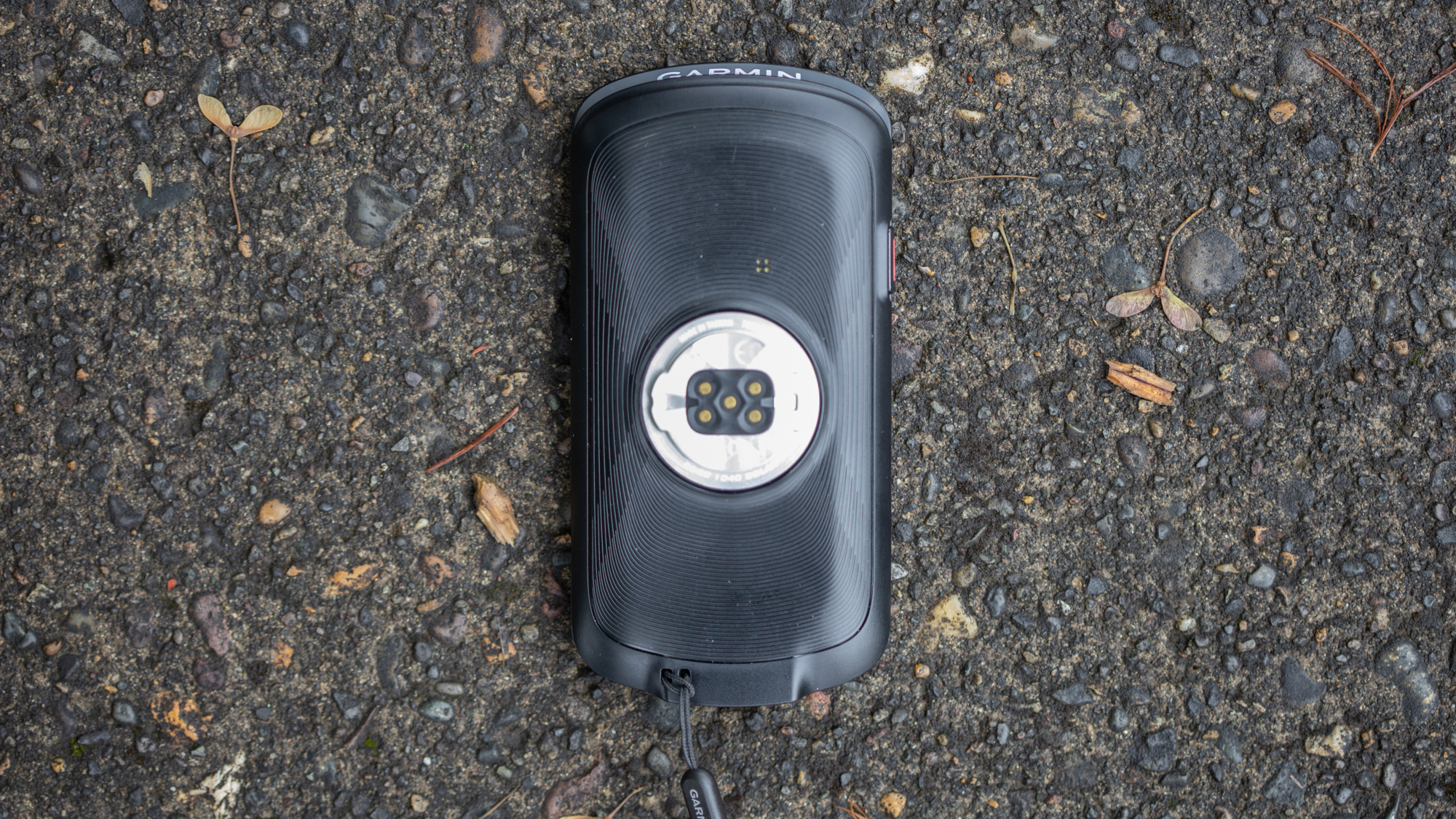
Garmin 1040 Solar
You can think of the Hammerhead Karoo 2 as the baseline for a modern cycling computer. We walked through how it excels in some areas, falls short in some, and generally does what most people will need it to do. Now it's time to talk about the most advanced cycling computer currently available on the market. What does that mean and what does that get you for the extra money?
To start with there's the baseline comparison. When it comes to tracking your rides the two options are very comparable. Mostly that's because the cycling industry has remained very open with standards and the ability to connect with sensors is the same for most computers. You can connect with ANT+ and Bluetooth sensors for heart rate, power and cadence to track that data. One glaring difference between the two options is the additional Shimano Di2 compatibility Garmin is currently enjoying. We hope to see Shimano fix this soon but, for now, Garmin users not only have the ability to connect with their bikes to display gears but the buttons on top of the hoods will interact with options like changing the screens of the computer.
Like Hammerhead, Garmin organises displays around profiles. Choose or create a profile depending on your use, add the pages you want, and organise the data in the way that works for you. Both systems have a climbing screen that will pop up when you start climbing. Hammerhead does have an advantage here in that you do not need to have a route loaded for the climbing screen to work. For indoor riding both have very similar capabilities but Garmin makes it much easier to control a trainer without loading a workout. There's no need to dig into menus, it's right up in front.
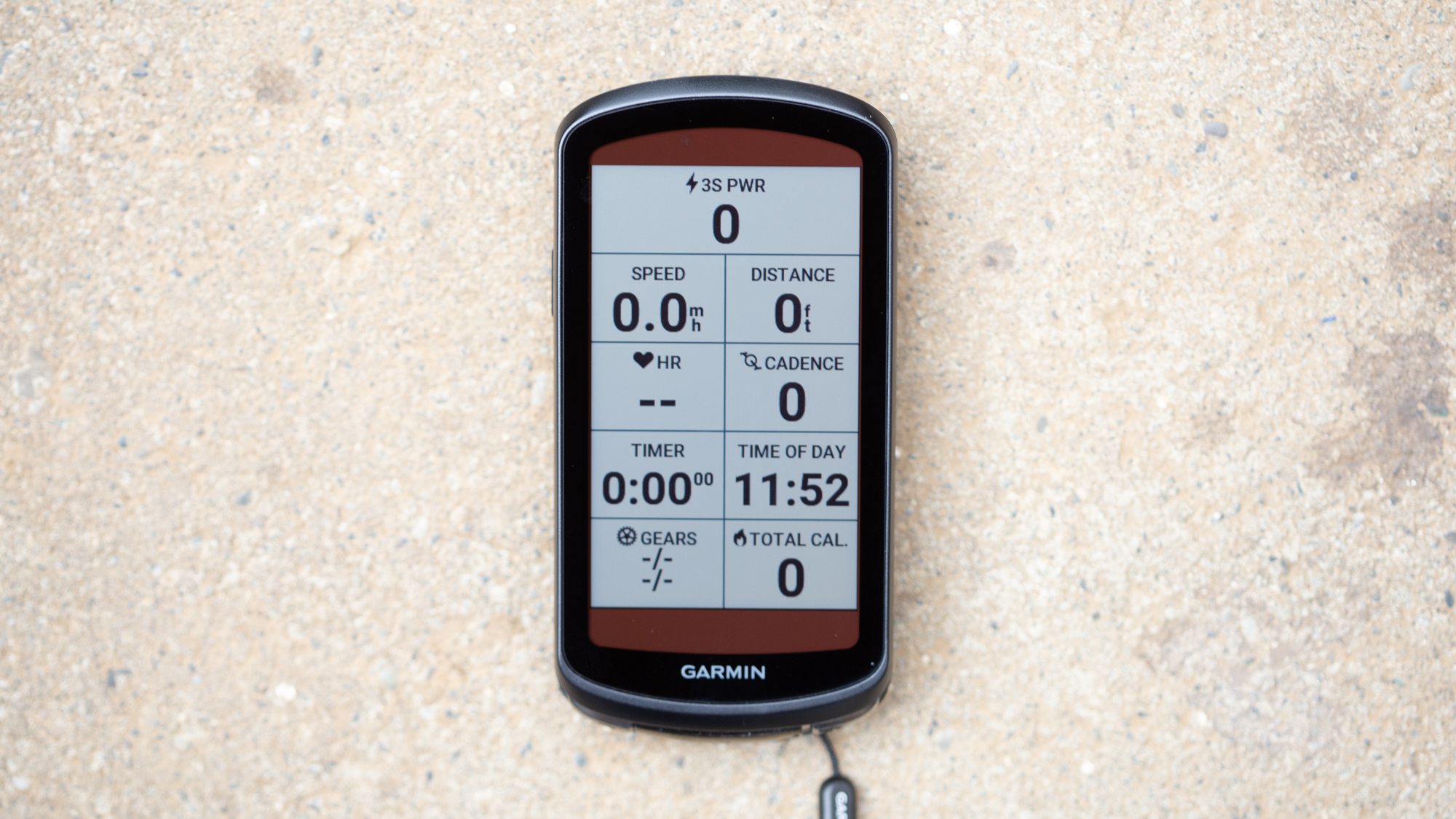
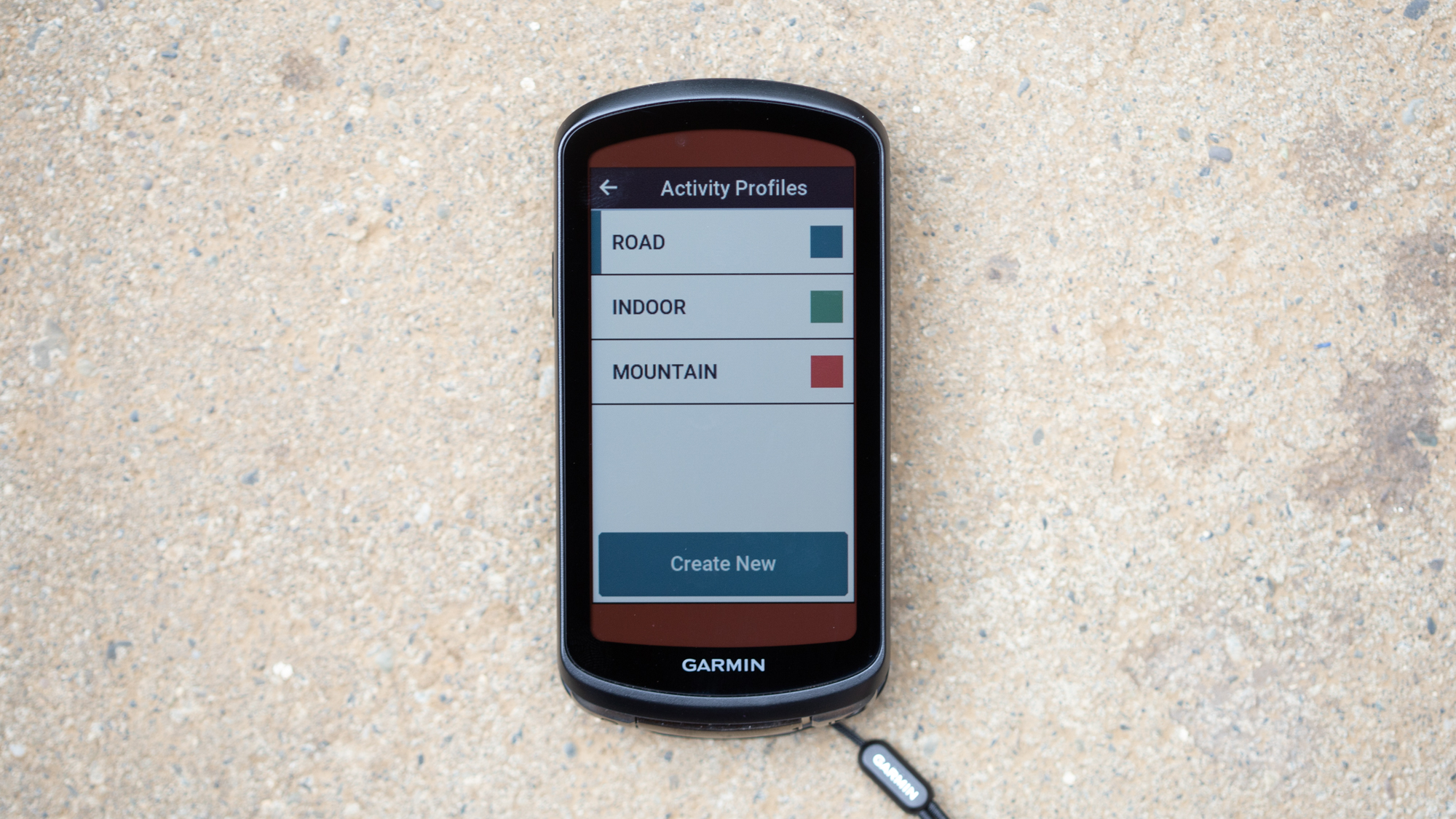
Both systems also allow for installing third-party apps. Garmin has a whole marketplace akin to Apple or Android so on the face of it that's an advantage. Hammerhead allows for sideloading of Android apps though. It's a little less polished as an experience, and it requires a cable, but once you figure it out, the breadth of what you can do is pretty astonishing. Maybe install Opera so you can navigate to the web interface for Hammerhead then install Spotify for music, both are possible.
For the screen, the Garmin uses the same 3.5in (88.9 mm) diagonal screen from the previous Edge 1030 Plus. The resolution is 282 x 470 pixels and with a bit of maths you can see that the Karoo 2 and its 292ppi resolution is about double the Garmin. The display on the Karoo 2 is smaller though so if you want a bigger interface, Garmin has it. Actually looking at the two, the difference is very minimal. Garmin doesn't talk about how many colours they have but I suspect it doesn't match the 16.7 million Hammerhead has on tap. Despite all that, the Garmin's gloss screen and mature interface looks fantastic and definitely matches the matte screen on the Hammerhead.
They both support multitouch as well but the Hammerhead has a slight advantage as it relates to the interaction with the map in general. The map has better colour and while you can pinch to zoom and rotate the map with two fingers, it's easy to accidentally add a pin to the Garmin map instead of zooming. In the background both draw on data to route intelligently but Hammerhead uses the data from Suunto while Garmin has a much larger pool of user data to pull from given their market leadership. This is also a good time to mention that Garmin introduced much more accurate satellite connectivity with the 1040 Solar. Hammerhead might enjoy a slight mapping interface advantage but Garmin is much better at knowing exactly where you are in relation to the map.
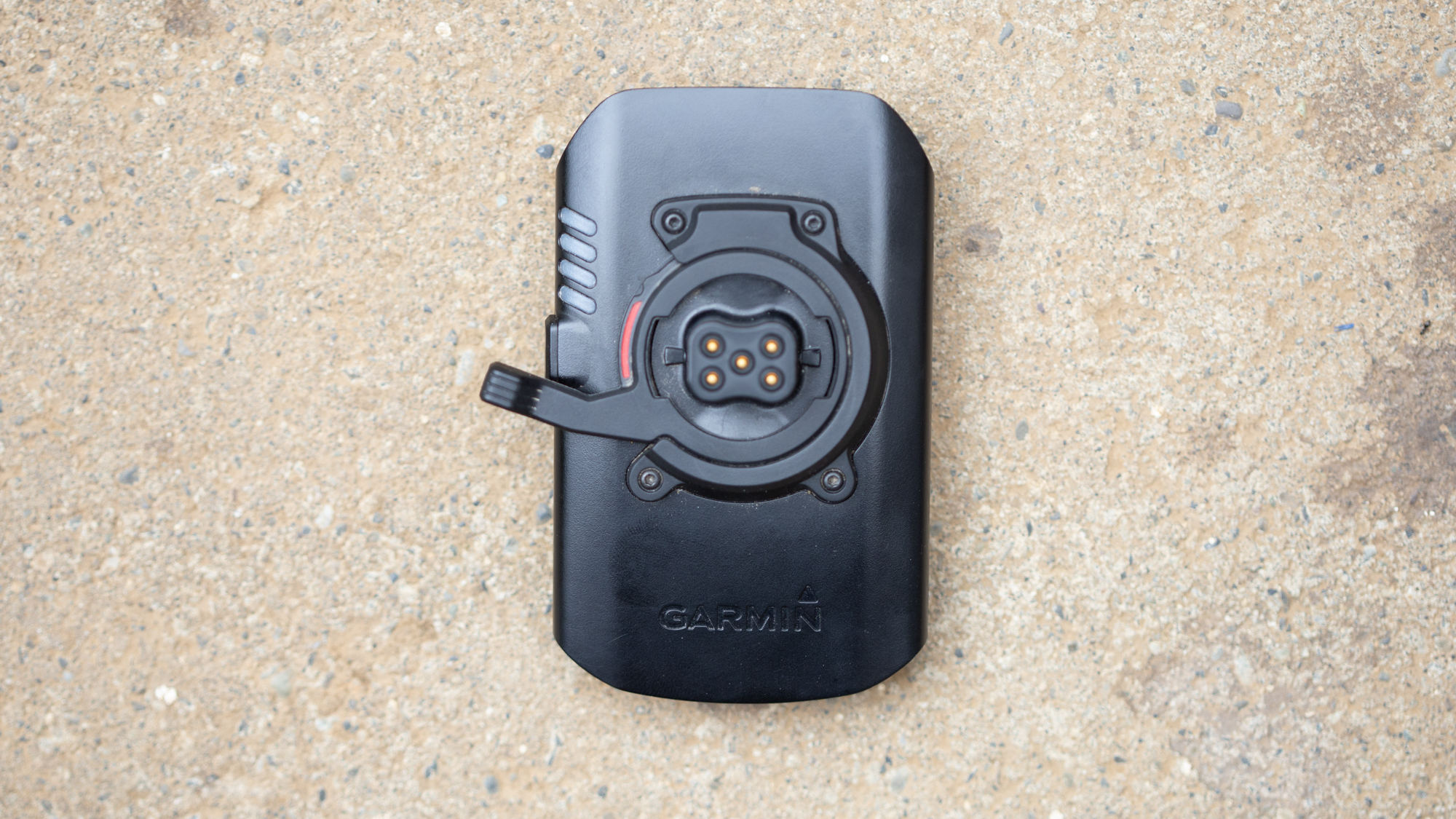
The battery life equation
So far things might feel kind of neck and neck but that's because we haven't really touched on Garmin's strengths. The first place where Garmin really pulls away is when you look at the battery life. The battery is actually quite a bit smaller at 1800 mAh but it's somewhat inconsequential in this discussion. The Hammerhead Karoo struggles to hit 14 hours of run time while the Garmin 1040 Solar quotes an extended range, using battery saver techniques just like the Karoo 2, of 100 hours. The number doesn't even really tell the story either. The Solar model will recharge in sunny weather while riding, and the amount is significant. In regular use, without battery save mode, Garmin quotes 45 hours with solar charging. In my time with the unit, a couple of weeks of normal use, I haven't had to charge it and that's without making use of solar charging in my house. If I had a sunny window available I could let the Garmin charge while I wasn’t riding.
Obviously, most people in most situations don't need that kind of battery life but it has the power to change your riding. The simplest thing it means is that you almost never have to think about charging. That's only scratching the surface though. If you head out the door for a 400-mile ultra-event, like I did recently, you don't have to think about how you'll charge your cycling computer. Without doing anything, you can likely forget about charging but there's also the option of adding the Garmin Charge Power Pack to charge while riding, even if it's pouring rain. Or maybe a less extreme example would be a weekend of bikepacking with no need to bring extra battery power for your computer.
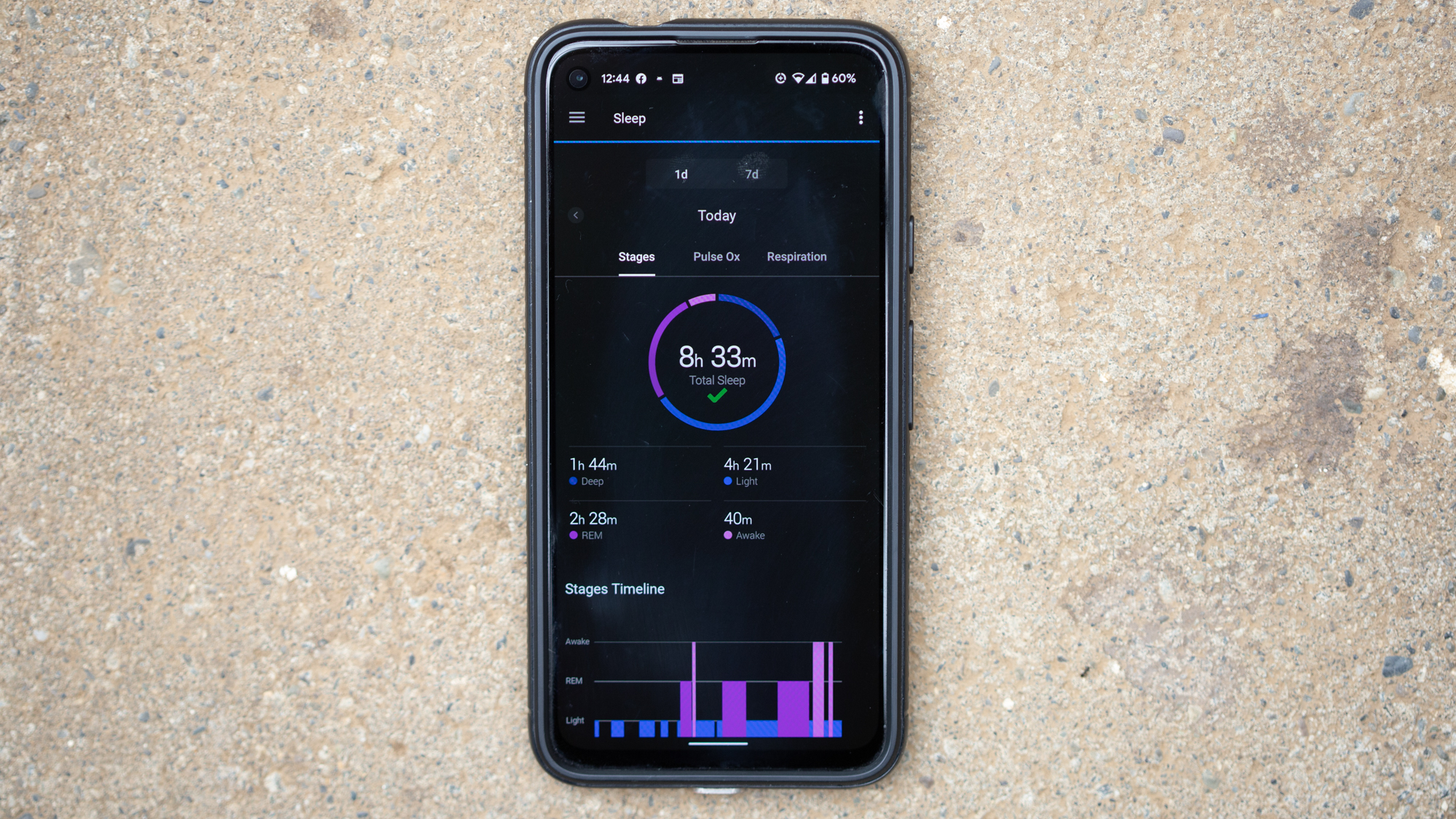
Staying connected and tracking your whole life
The other area where the Garmin Edge 1040 Solar excels is a combination of smartphone connectivity and the greater Garmin ecosystem. The basis for both pieces is the Garmin Connect app and Garmin Connect web interface. It's here that Garmin leverages the 1040 Solar as one small part of a greater whole but also allows you to make interacting with the 1040 Solar easier and faster.
When you open the box and turn on your 1040 Solar for the first time, there's a short process of connecting and logging in. If you are an existing Garmin user then it's possible to be up and running with everything set the way you want it within a few minutes. New and old users alike don't have to use the device to set up profiles and screens and can instead do that through the Garmin app on a phone.
When it's time to ride, your 1040 Solar will make use of your smartphone to stay connected at all times. It's possible to set it up so that a loved one automatically receives an email when you press start that includes a tracking link. They can see where you are, where you've been, and even data you are generating while you ride. It's a great way to stay safe and let people know where you are but it's also useful in other ways. If you are meeting someone for a ride, send them a link when you leave the house. If they get to the spot first, they can check where you are to see how long you'll be.
Then there's the power of the Garmin ecosystem. The Hammerhead Karoo 2 offers no training or health tracking features at all while, in contrast, this is one of the strongest parts of the Garmin promise. We'll discuss those details more in a moment but because of the integration with Garmin connect there's the option to extend it beyond your time on the bike. If you add a Garmin watch, as an example, then Garmin connect will take your sleep data and combine it with the workout data coming off your Edge 1040 Solar and offer even greater insight into recovery. You can track as much of your life as you want to get a complete picture of your training and recovery.
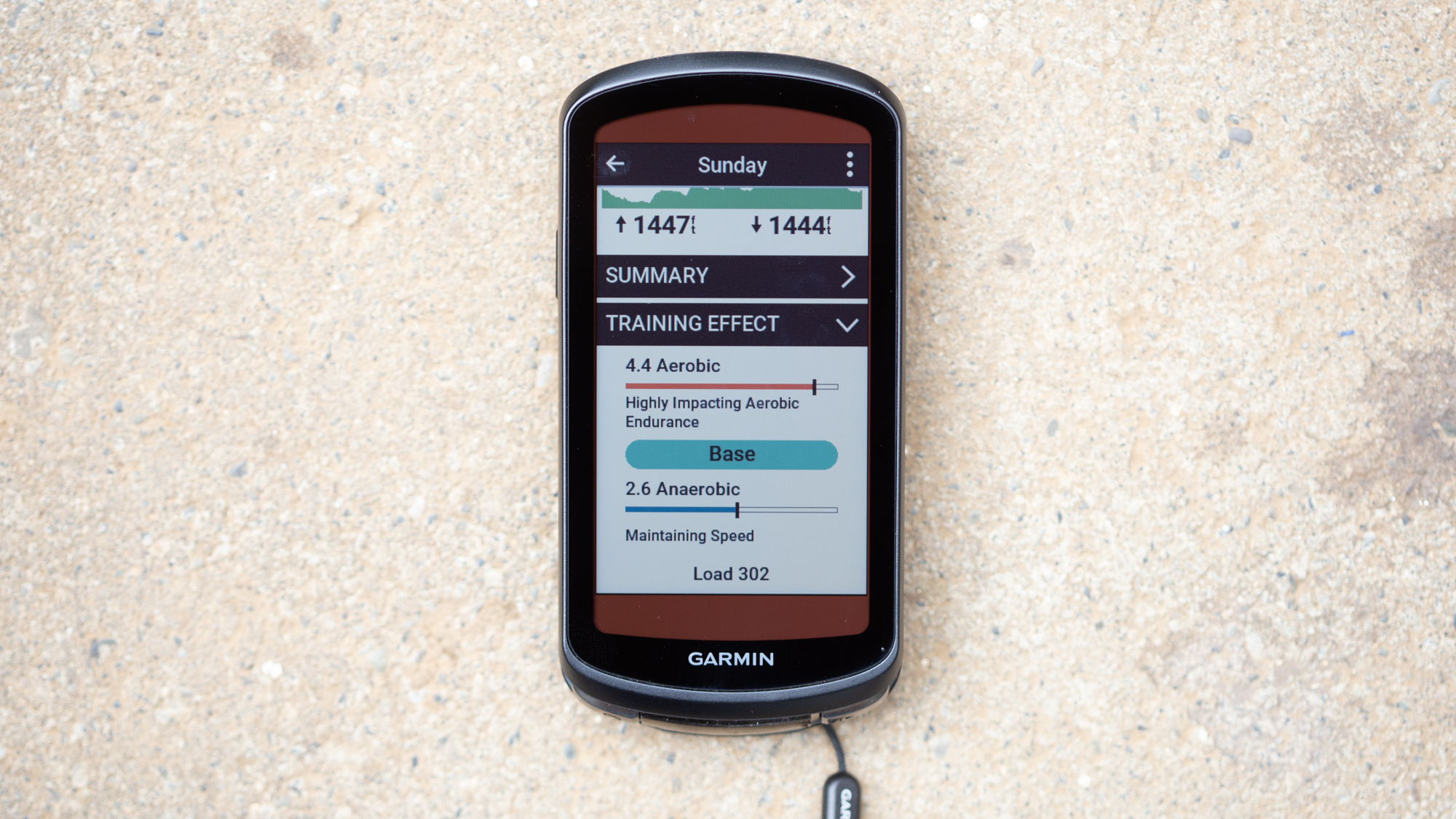
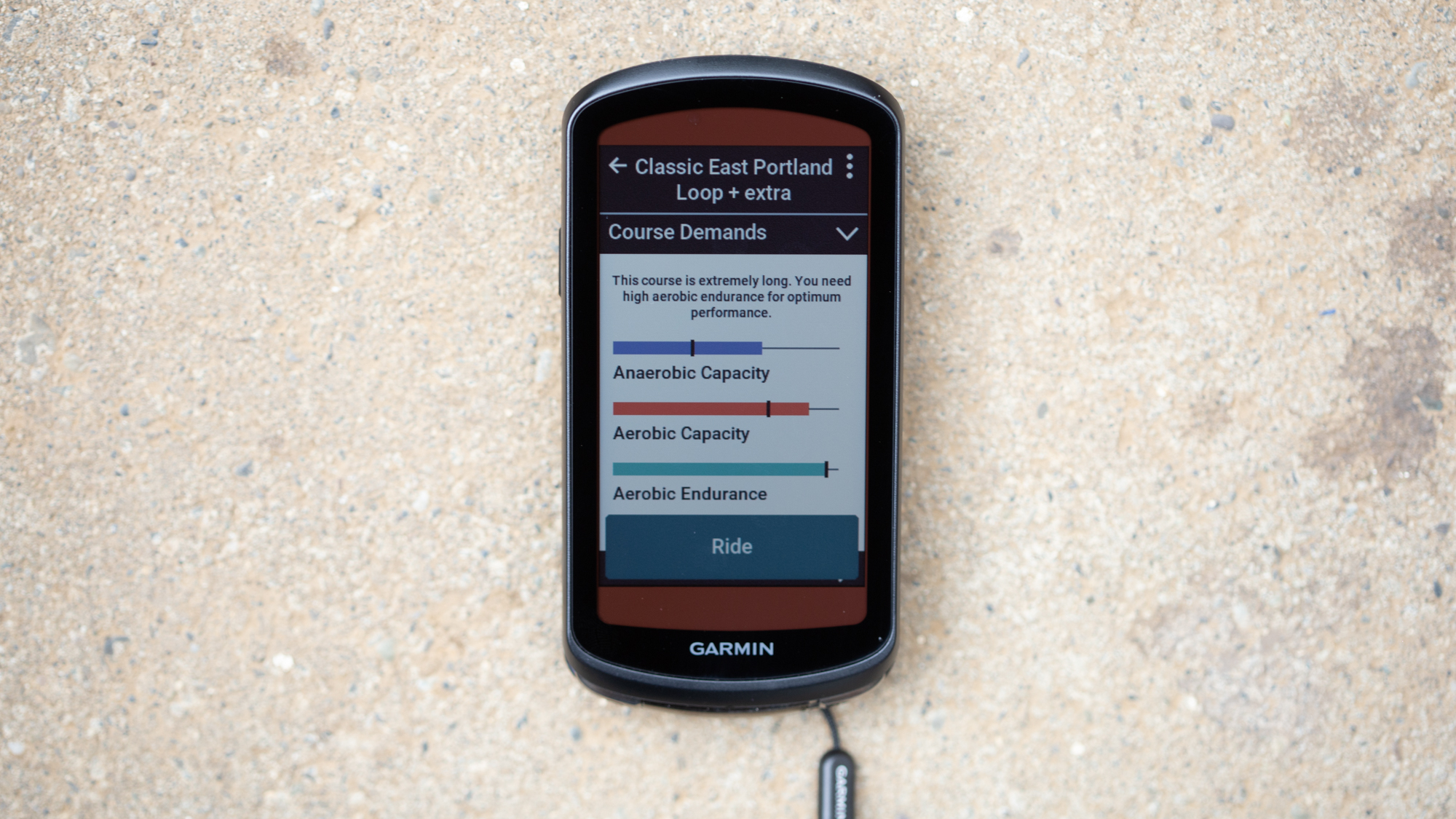
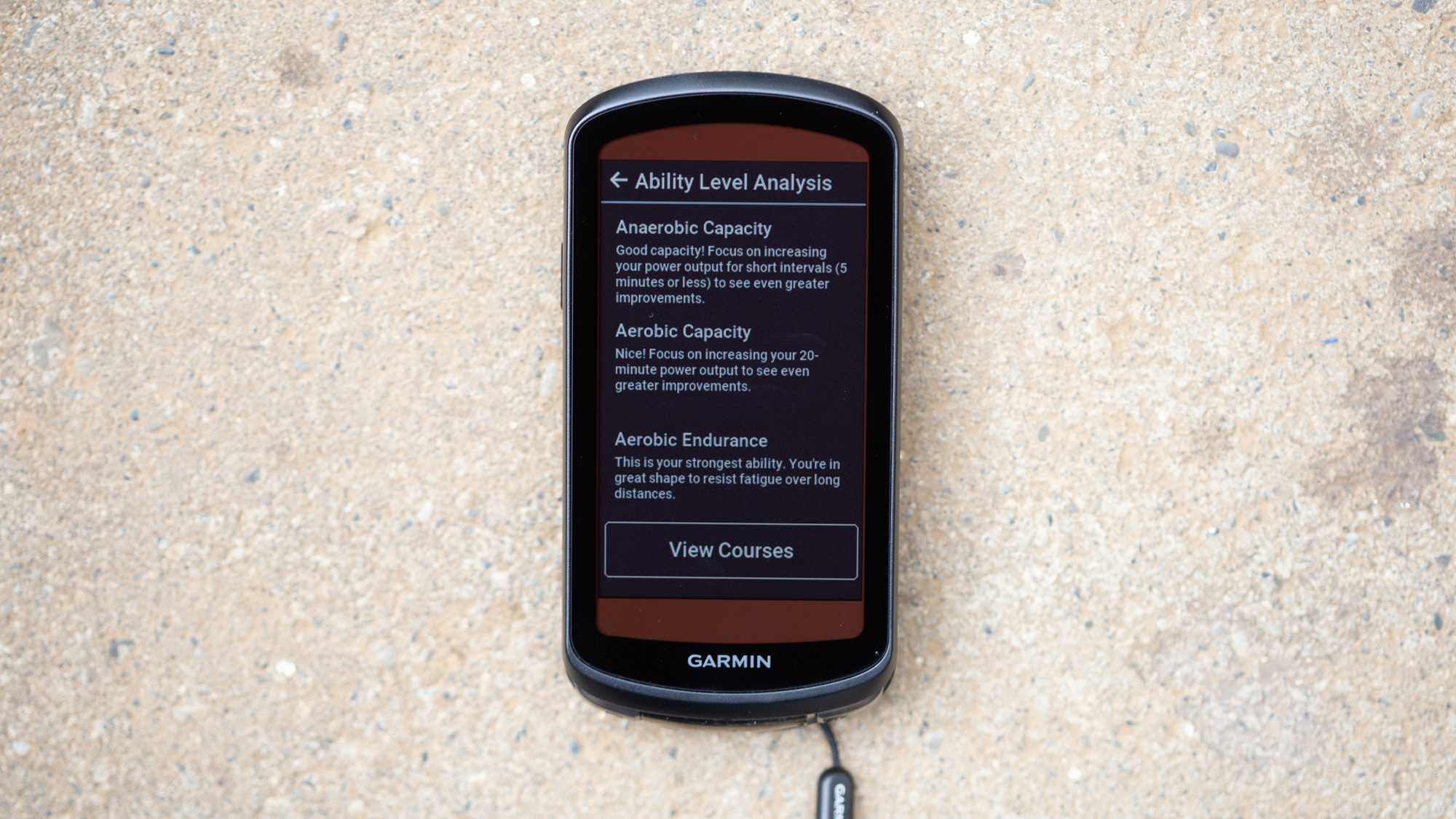
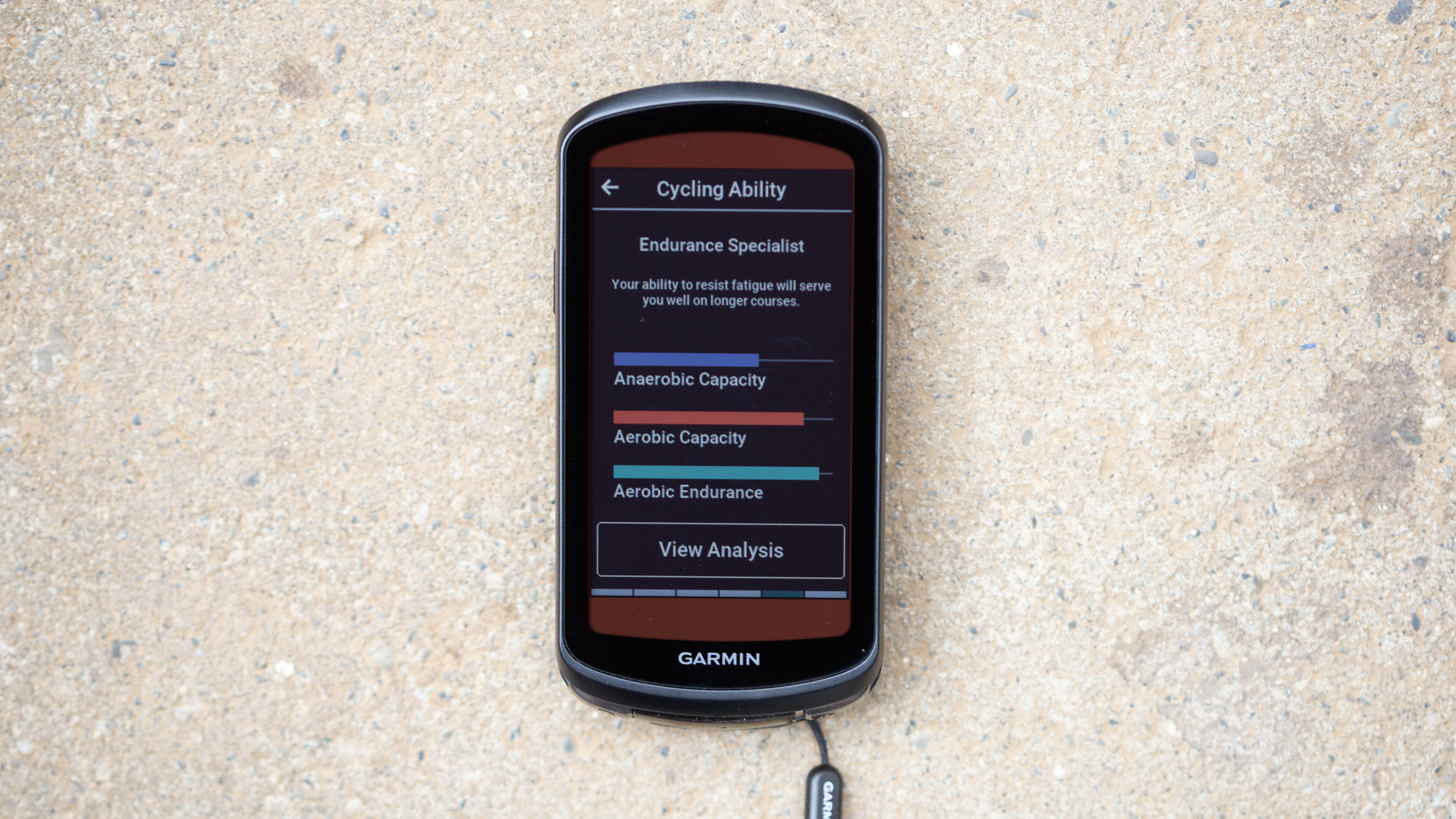
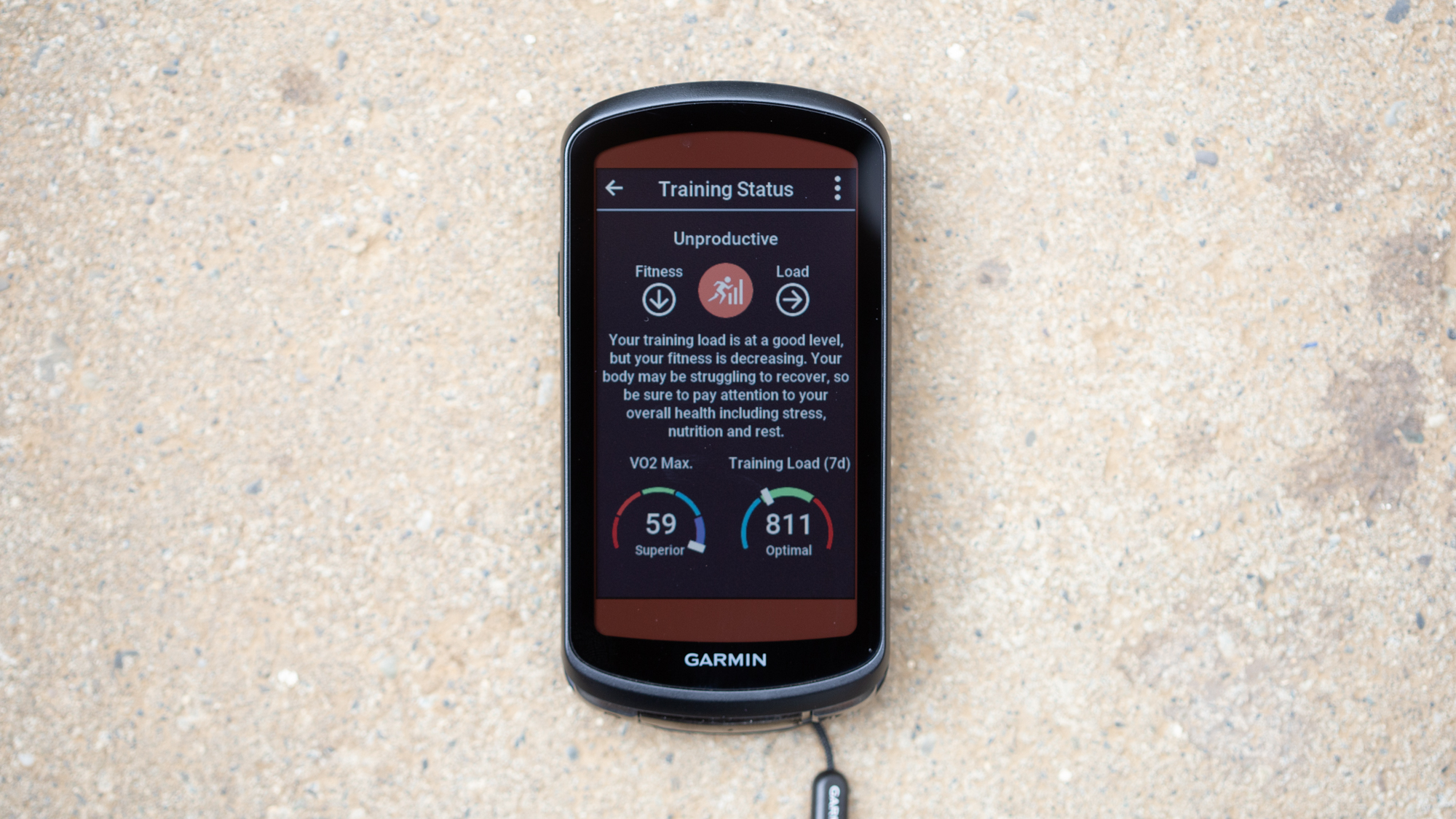
Your personal, automated coach
Garmin started offering pieces of this on older devices but the Edge 1040 Solar takes it even farther. Turn on your Edge 1040 solar and the new widget home screen will show your training status. Click on the widget and it takes you to another screen that explains the status and makes suggestions. It also shows your current V02 max and training load as well as details such as load focus that compares how your riding is impacting different parts of your training. Keep scrolling and there's now analysis that highlights what you are good at as a cyclist.
There are ways to leverage all that info as well. Pull up a course you have loaded, say an upcoming race, and you can get details about the course demands and how that compares to your fitness. When it's time to actually ride that course, you can set power goals so that the computer walks you through the ride. You'll get notifications to help you stay on target for the time you want. A simple harder/easier slider allows an adjustment of how you want to ride and there's details about the type of bike and position. Garmin has always been very accurate in predicting how long a course will take to ride, now there's an option to have the computer help you influence that estimate.
Even if you don't set anything up and don't follow any advice, there's still info there for you. During a ride the stamina info lets you tap into real time data giving you an idea of what you are capable of. If you find yourself chasing a friend up a hill the computer will tell you if what you are doing is sustainable. At the end of the ride, you can then view extensive post ride analysis. The normal time, distance, cadence, and speed is all there but it goes much farther. If you are riding with heart rate and power there's information about the zones you were in. Keep going, and there's an analysis of how that ride impacted your fitness.
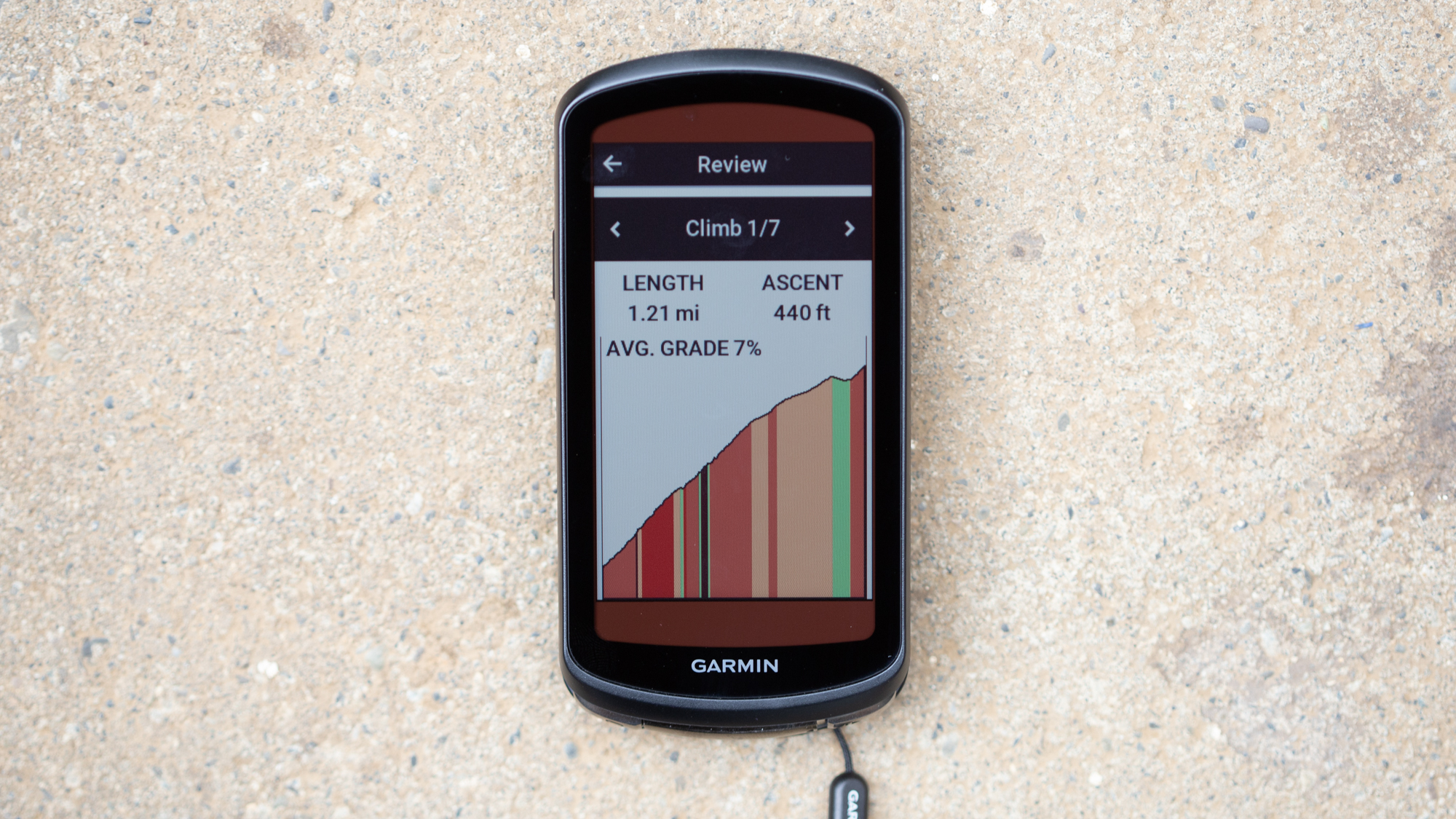
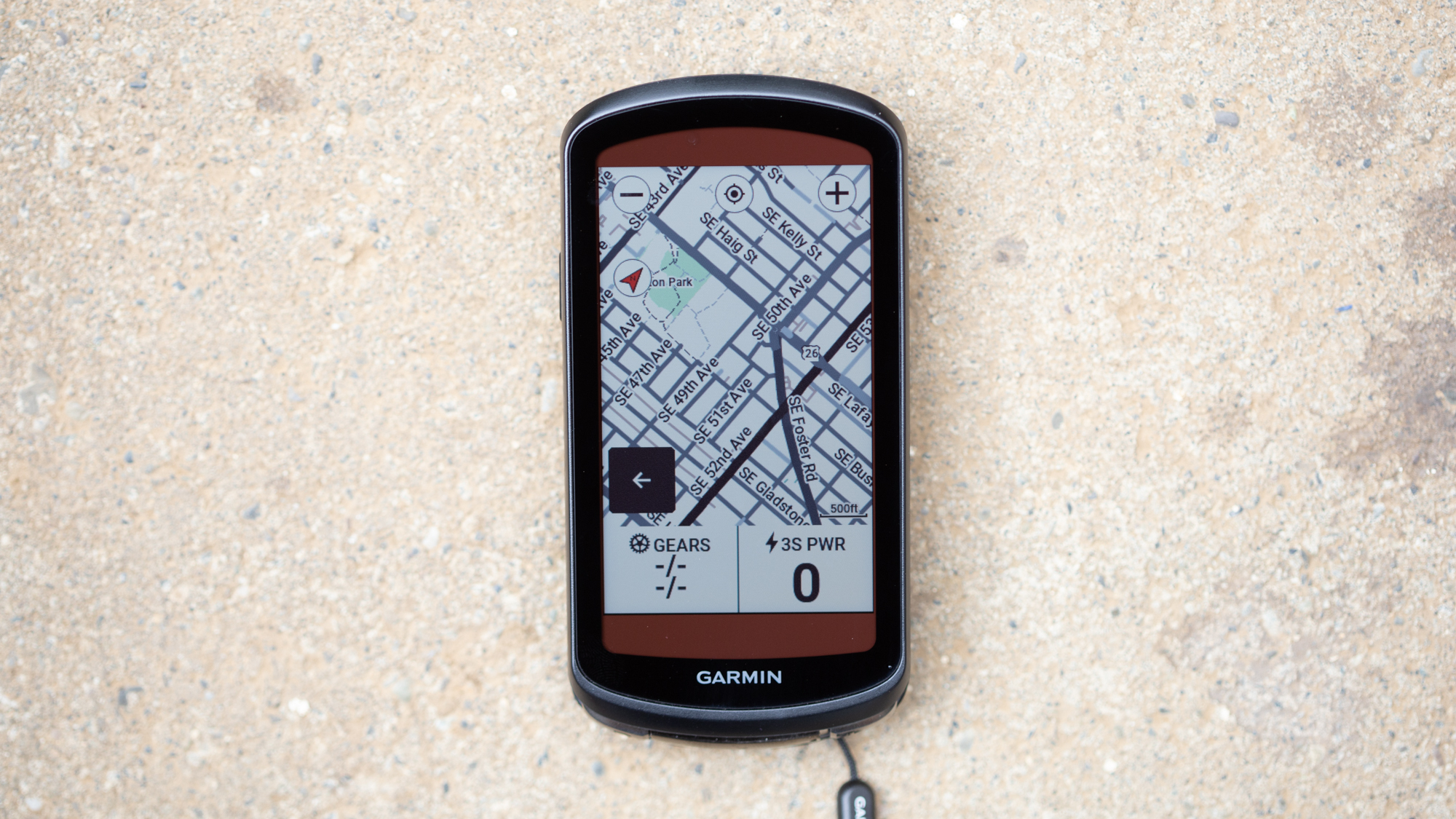
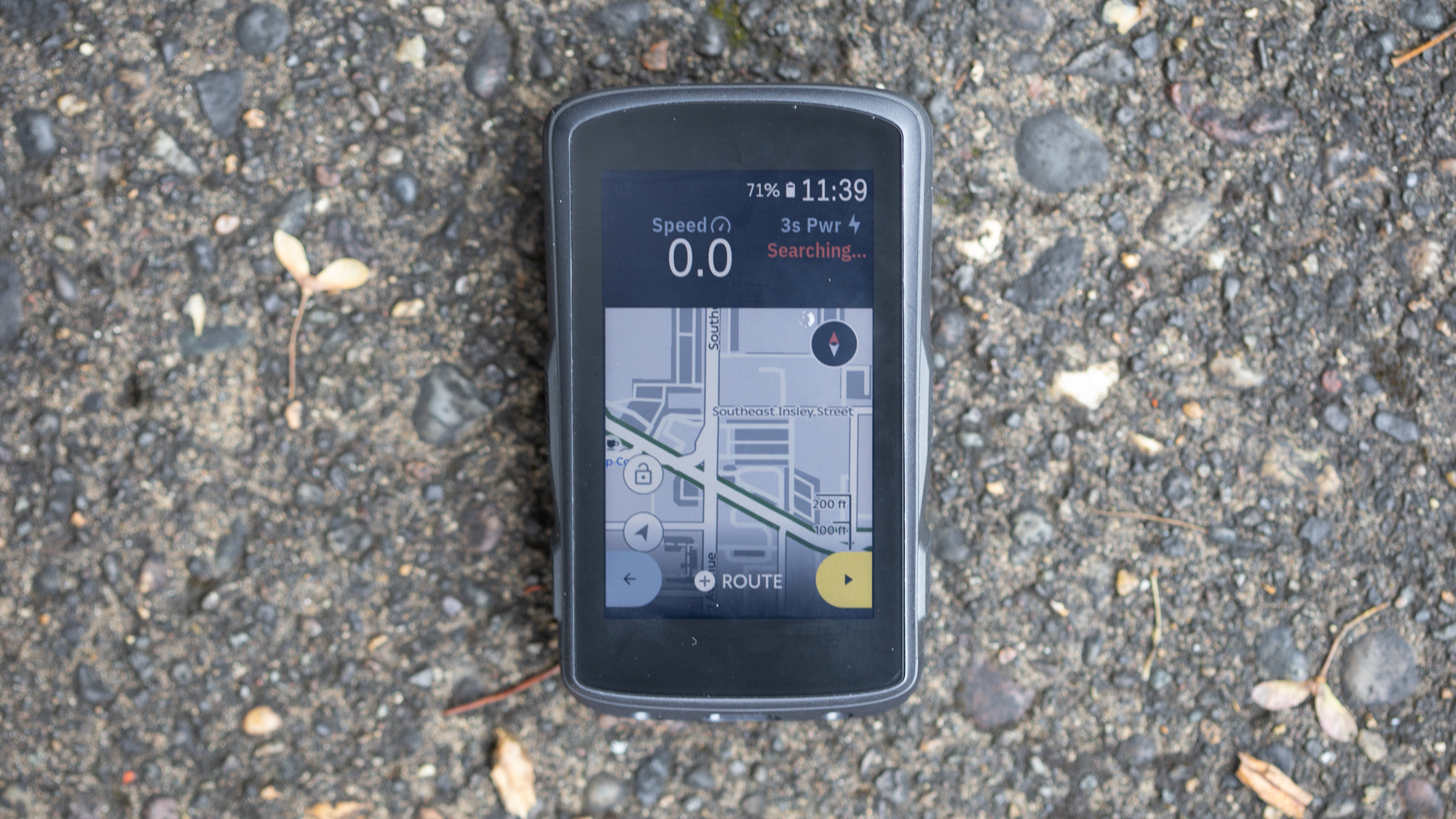
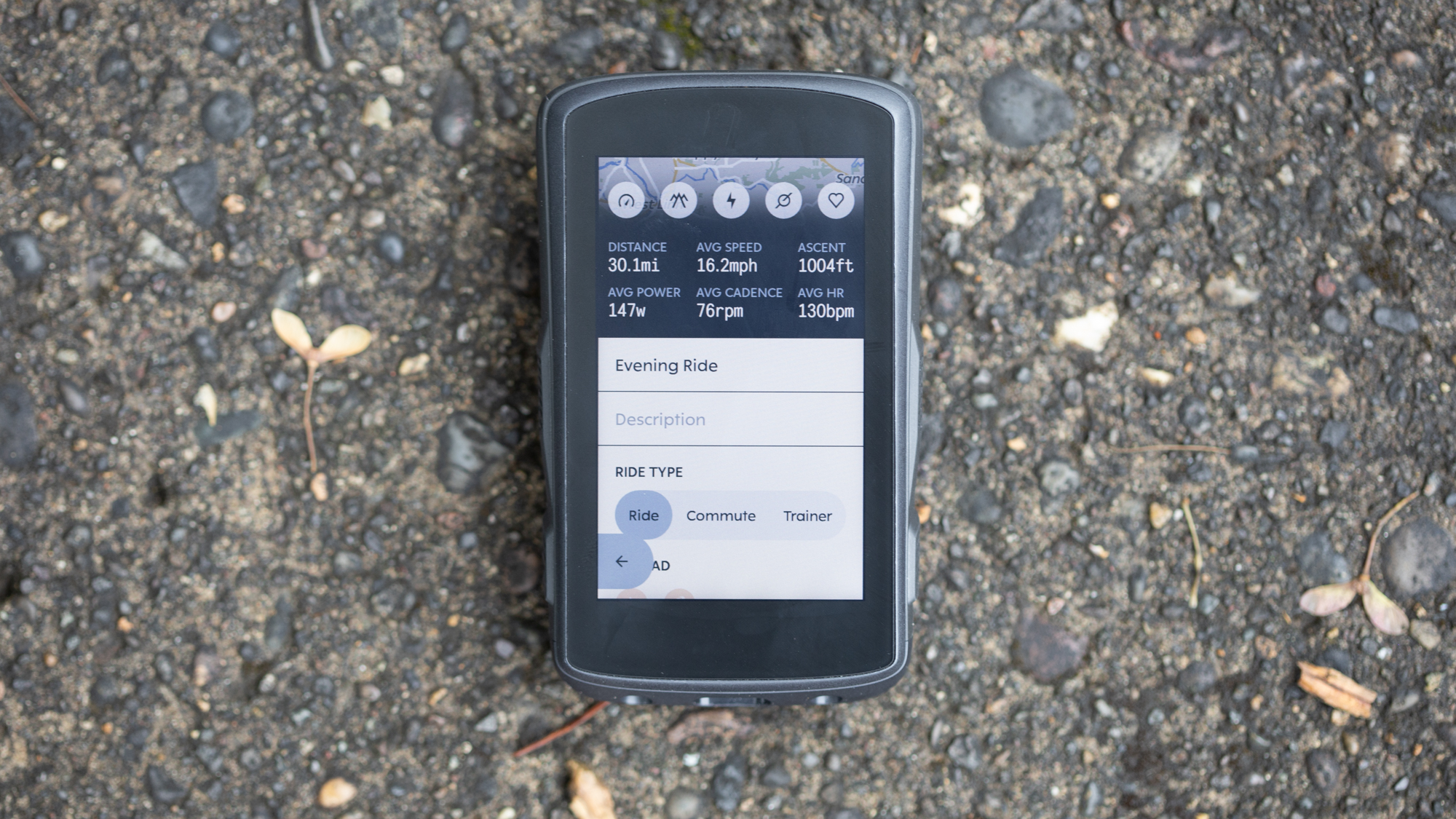
What choice makes sense for you?
The choice you make is going to come down to the needs you have. The Hammerhead Karoo 2 and the Garmin Edge 1040 Solar will both connect to nearly any sensor you can think of. They both have touchscreen interfaces and colour screens. They both allow you to customise the screens you see and they do a great job of helping you navigate pre-designed routes. If you get off course, they will help you get back on course and they allow you to create courses on the fly. At the end of every ride, they will automatically upload your data and send it out to connected services such as Strava.
The areas where the two options differ are battery life and training features as well as, to a lesser degree, smartphone connectivity. The Hammerhead Karoo 2 basically has no smartphone connectivity but there are ways to work around that. You'll have to decide if you like them but when it comes to battery life there is no work around. The Garmin Edge 1040 Solar offers almost four times the stated battery life of the Karoo 2 in normal use. There's also an available battery that will charge the unit in the rain and there are solar panels that will extend the use in bright conditions.
The training features that Garmin offers on the Edge 1040 Solar also have no equivalent on the Hammer Karoo 2. If long-term training for particular events, or to get faster, is important to you, the Edge 1040 Solar is probably a better choice. There are ways to make the Karoo 2 work for you though. Xert is a powerful training and pacing tool and it's available through the Karoo 2 for use during a ride. After a ride you could move your data to a variety of places, such as Stages-Link, for post ride analysis and long-term training data. None of it's as integrated and it all costs extra money but you'd have a lot of extra money to spend with the price saved compared to the Garmin Edge 1040 Solar.
Josh hails from the Pacific Northwest of the United States but would prefer riding through the desert than the rain. He will happily talk for hours about the minutiae of cycling tech but also has an understanding that most people just want things to work. He is a road cyclist at heart and doesn't care much if those roads are paved, dirt, or digital. Although he rarely races, if you ask him to ride from sunrise to sunset the answer will be yes. Height: 5'9" Weight: 140 lb. Rides: Salsa Warbird, Cannondale CAAD9, Enve Melee, Look 795 Blade RS, Priority Continuum Onyx
